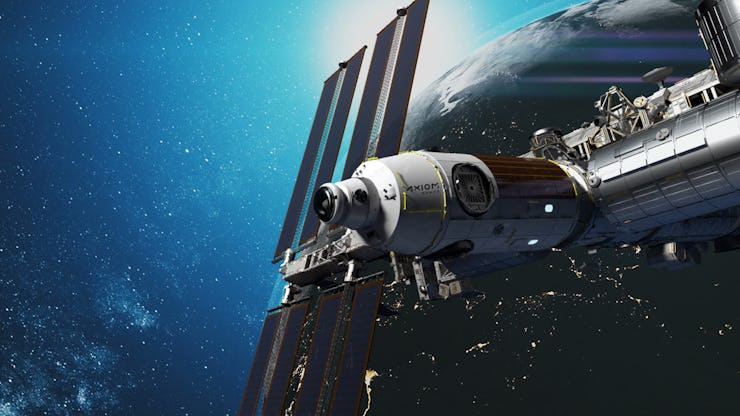SpaceX Crew Dragon: Photos show Axiom Space station it will help build
A private crew is flying to the International Space Station, laying the groundwork for its successor.

SpaceX's Crew Dragon is set to help build a successor to the International Space Station. One of the new space station's developers describes it as "a thriving home in space that benefits every human everywhere."
The "AX-1" mission, launching no earlier than January 2022, will send four private citizens to the International Space Station using the firm's human-carrying capsule. Axiom Space, the Texas-based company organizing the mission, is using it as a means to lay the groundwork for its own space station.
“We're talking about building a thriving home in space that benefits every human everywhere,” Christian Maender, director of in-space manufacturing and research at Axiom Space, tells Inverse.
Want to find out more about what the space station will be used for, when it will be built, and how it could support crewed missions deeper into the Solar System? Read the full interview, only in Musk Reads+.
Axiom Space's station in action.
The International Space Station can't last forever. The station was finished in 2011, but international partners have only cleared its use up until December 2024. NASA awarded Axiom Space a $140 million contract in January 2020 to attach at least one habitable commercial module to the ISS.
The move could follow a similar path to the Crew Dragon itself. When NASA's shuttle program ended in 2011, it had to use Soyuz rockets taking off from Kazakhstan to send its astronauts to the space station. The Commercial Crew program tasked SpaceX and Boeing with developing new capsules that could complete the same trip.
A private space station from Axiom Space could ensure NASA isn't left in a similar position again, with a decommissioned ISS and nowhere to send astronauts.
The interior designed by Phillipe Starck.
The "AX-1" mission — not to be confused with the "Inspiration4" mission advertised during the Super Bowl — will help pave the way for this station by training up the team in skills required to run a space station. It will also build up relationships with potential commercial partners.
The mission will send four crew members to the International Space Station for eight days:
- Michael López-Alegría, the mission commander. He’s a former NASA astronaut and now vice president of Axiom Space.
- Larry Connor, the pilot. He’s an entrepreneur from Dayton, Ohio, and has a history of racing, rafting, flying, and mountain climbing.
- Mark Pathy, who will be Canada’s 11th astronaut. He’s an investor, philanthropist, and CEO of Montreal-based investment firm Mavrik.
- Etyan Stibbe, who will be Israel’s second astronaut. The first was Ilan Ramon, who died in 2003 when the Columbia space shuttle disintegrated.
Beyond Axiom Space's initial space station, the mission could ultimately precede the establishment of multiple space stations in low Earth orbit, acting as a new hub for humanity.
TO CONTINUE READING THE FULL INTERVIEW, SUBSCRIBE TO MUSK READS+.
Here is what you will gain from subscribing to MUSK READS+:
- Three emails per week, enabling fans to go deeper into the week’s news.
- Original interviews and reporting, longform analysis, previews and recaps of major events, including earnings calls and more.
- Community-focused extras like responses to reader mail, an upcoming event calendar, and notable anniversaries.
- An archive of previous subscriber-only content, so you can easily read back over what you might have missed.
- Promotional deals and offers.
- Supporting original, independent journalism.
- Further extras to be announced.
MUSK READS+ is a fully independent operation. We are not Elon Musk, nor are we employed by him. Our job is to report the events we find newsworthy, giving you the inside look at the worlds of space rockets, electric cars, clean energy, and more. It means first-hand accounts of a SpaceX rocket launch, Tesla insights from third-party analysts, and more.
If you want to support us in our mission, and receive original interviews and analysis, consider contributing with a subscription.
This article was originally published on